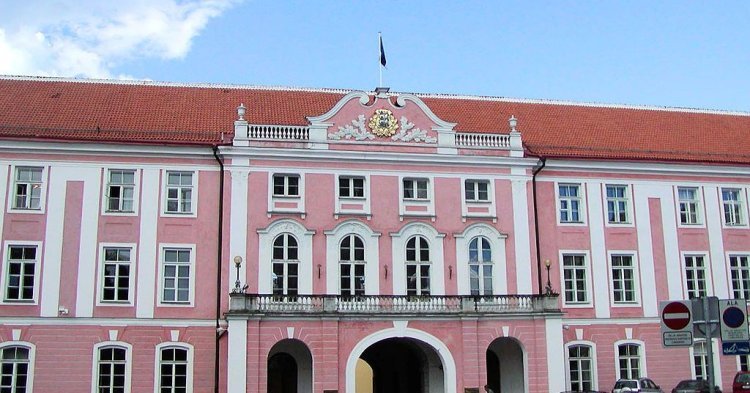During the general election on the 3rd of March, 2019, Estonians put their trust in the centre-right Estonian Reform Party (ERE) which won 34 seats out of 101 in the Estonian Parliament. However, it was the centre-left Estonian Centre Party (EKE) that was able to form a coalition government with the far-right Conservative People’s Party of Estonia (EKRE) and the right-wing Isamaa party. But in January 2021, the Estonian political scene was rocked by the resignation of Ratas’ second government and by the appointment of a new government led by Kaja Kallas.
Resignation of Ratas’ Second Government
It took a scandal involving the cornerstone of the EKE-EKRE-Isamaa coalition to bring down the government, and for Prime Minister Jüri Ratas (the leader of EKE) to announce his resignation on the 13th of January this year. This radical decision was made after a corruption scandal concerning his party and his private company (Porto Franco) came to light. The real estate company reportedly received a sizeable state loan from the national credit agency KredEx, while the father of Porto Franco’s director is said to have made a generous donation to the EKE party. Agreed in 2020 by KredEx, the loan of €39.4 million is part of a government scheme to help companies affected by the COVID-19 crisis. On the 14th of January, businessman Hillar Teder and former adviser to the Finance Minister, Kersti Kracht, were taken into custody. Moreover, the Estonian Internal Security Service (KaPo) announced on the 12th of January that the EKE party would be named as a suspect in the corruption investigations. Many party members, including former Education Minister Jaak Aab, reject this decision. However, it will be up to the judges to decide whether they are guilty, as well as what responsibility they bear.
Inauguration of the Kallas Government – a new beginning with women at the helm
On the 14th of January the Estonian President, Kersti Kaljulaid, asked the leader of the Estonian Reform Party, Kaja Kallas, to form a new government within 14 days. After immediately ruling out a coalition with Isamaa and EKRE, a new government was formed between ERE and EKE. The new Prime Minister and government, comprising 14 ministers, was appointed on the 26th of January by the Estonian President. The government’s ministries were equally distributed between the two parties. While ERE holds the Ministries of Justice, Defence and Finance, EKE kept two important cabinet roles: Foreign Affairs and Public Administration. It is remarkable that, for the first time, the most Nordic of the Baltic countries is run by two women: President Kersti Kaljulaid and Prime Minister Kaja Kallas. Furthermore, equality in the government seems to have been achieved as seven of its fifteen members are women. This is encouraging news in a country where the pay gap between men and women is one of the greatest in the EU. According to Eurostat data from 2018, the gap rose to 21.8%, far surpassing France with 16.7%, or the Netherlands with 14.6%.
The Priorities of the Kallas Government Approved on 11th February
As is customary when a new government takes office, the government must adopt priorities for the first one hundred days in office. Kallas’ government did so on the 11th of February, and they have great ambitions. Apart from the unfortunate priority of having to solve Covid-19 related issues, the measures focus on mobilising funds from the European Recovery Fund; a plan to achieve carbon neutrality by 2050, and the creation of an action plan to promote and teach the Estonian language. Finally, a last priority needs to be further analysed: that of an “active and protected country”. This means that Estonia must strengthen ties with its strategic partners, like the United States, Poland, France and Baltic and Nordic countries. Moreover, on 18th February the Foreign Minister, Eva-Maria Liimets –a member of the EKE party– announced that she aims to ratify the Estonian-Russian border treaty, signed in 2014, in order to solve the final territorial dispute between an EU member state and the giant that is Russia. The sensitive subject of borders goes back to the 1920 Treaty of Tartu, which was advantageous to Estonia, giving it land which is today governed by Russia. But after becoming a part of the Soviet Union, the borders drawn up in 1920 have somewhat changed. The last treaty signed between the two countries in 2014 is the third attempt to solve this problem since Estonia gained independence. However, both national parliaments need to ratify the convention including the exchange of land, and which will enter into force 30 days after it is democratically approved in both countries. This is where the difficulties lie as unilateral ratification will lead to no change. Diplomacy must play its part, but after Josep Borrell’s comments in Moscow, it will be difficult for European diplomats to work with Sergey Lavrov, the king of Russian foreign affairs since 2004.


Follow the comments: |
|
